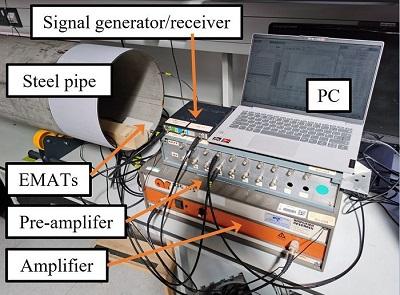
An inspection design approach by which mobile robots can look at large pipe buildings has been demonstrated with the worthwhile inspection of numerous defects on a 3-m-long steel pipe using guided acoustic wave sensors.
This methodology, developed by a Faculty of Bristol workers, was used to analysis defects along with spherical holes with fully completely different sizes, a crack-like defect, and pits by means of a designed inspection path to comprehend 100% detection safety for a defined reference defect.
Of their analysis revealed in NDT and E Worldwide, “Pipe inspection using guided acoustic wave sensors built-in with mobile robots,” Jie Zhang, Xudong Niu, and workers leaders Anthony J. Croxford and Bruce W. Drinkwater make clear how they’ve been ready to take a look at large plate-like buildings using a neighborhood of unbiased robots, each carrying sensors capable of every sending and receiving guided acoustic waves, working in pulse-echo mode.
This methodology minimizes communication between robots, requires no synchronization, and raises the potential for on-board processing to lower information swap costs and subsequently reduce common inspection payments. The inspection was divided proper right into a defect detection and a defect localization stage.
“As the value of mobile robots has lowered over newest years, it is increasingly potential to deploy numerous robots for an enormous house inspection,” outlined Zhang. “We take the existence of small inspection robots as its place to start and uncover how they are often utilized for generic monitoring of a development. This requires inspection strategies, methodologies, and analysis procedures which may be built-in with the mobile robots for proper defect detection and localization that is low value and efficient.”
The technique might very properly be used all through completely different provides, pipe geometries, noise ranges, and guided wave modes, allowing the whole fluctuate of sensor effectivity parameters, defects sizes and sorts, and dealing modalities to be explored.